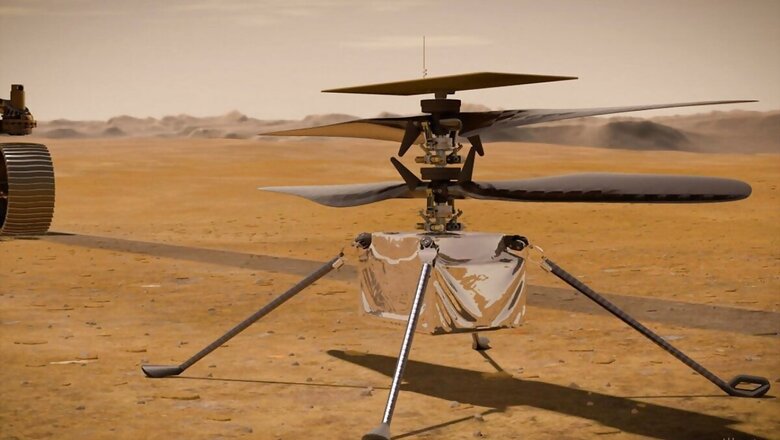
views
If you thought your new Android smartphone isn’t already cutting edge, you’d be very wrong. In fact, chances are, your new Android phone, particularly if you’ve splurged on a flagship phone, is more powerful than some of the tech that has landed on Mars recently. The Mars 2020 Perseverance rover which landed on the red planet earlier this month carries with it the Ingenuity Mars Helicopter, an autonomous drone. This drone is powered by the Qualcomm Snapdragon 801 processor, essentially the Qualcomm Snapdragon Flight iteration that drives the Qualcomm Robotics Flight 801 platform. It has its own little important mission on the planet.
The Ingenuity Mars Helicopter isn’t actually part of the Perseverance’s mission but is on an experimental 30 Martian day test flight, that is 31 days here on earth, in temperatures that drop as low as minus 130 degrees Fahrenheit, which is minus 90 degrees Celsius. If this test is successful, NASA will plan another test flight in the coming months. The Snapdragon Flight platform was announced back in 2015, and the core specs include a 2.26GHz processor as well as two cameras—one is a downward-facing 0.5-megapixel navigation camera that maps the Martian surface while there is a 13-megapixel front facing camera that gives it greater awareness. And those awesome photos of Mars, that we’ll eventually see.
There’s a lot that this platform has to do as part of the Ingenuity Mars Helicopter tests, in what are most definitely very testing conditions. The Ingenuity Mars Helicopter will have to understand the temperature and keep the internals warm, ensure the batteries are topped up, monitor the blades and motors to ensure they don’t freeze and fly as well as land autonomously. In case you need a refresher, the Qualcomm Snapdragon 801 chip powered some of the popular Android flagship phones in the past, including the OnePlus One, the HTC One M8 and the Samsung Galaxy S5—around the years 2014 and 2015. Since then, we have seen the various upgrades, namely the Snapdragon 805, Snapdragon 808, Snapdragon 810, Snapdragon 820, Snapdragon 821, Snapdragon 835, Snapdragon 845, Snapdragon 855 and Snapdragon 855+, Snapdragon 865 and Snapdragon 865+ as well as the latest Snapdragon 888. And at each step, your computing devices including Android smartphones, have becomes significantly more powerful.
Interestingly enough, the Mars 2020 Perseverance rover runs what can only be described as much older specifications and architecture. It runs the BAE RAD 750 radiation-hardened processor with 256MB RAM and 2GB of storage. This PowerPC 750 architecture delivers up to 200Mhz clock speeds. These specs would be similar to an Apple iMac from 1998 or a PowerBook G3 from that era.
Read all the Latest News, Breaking News and Coronavirus News here



















Comments
0 comment